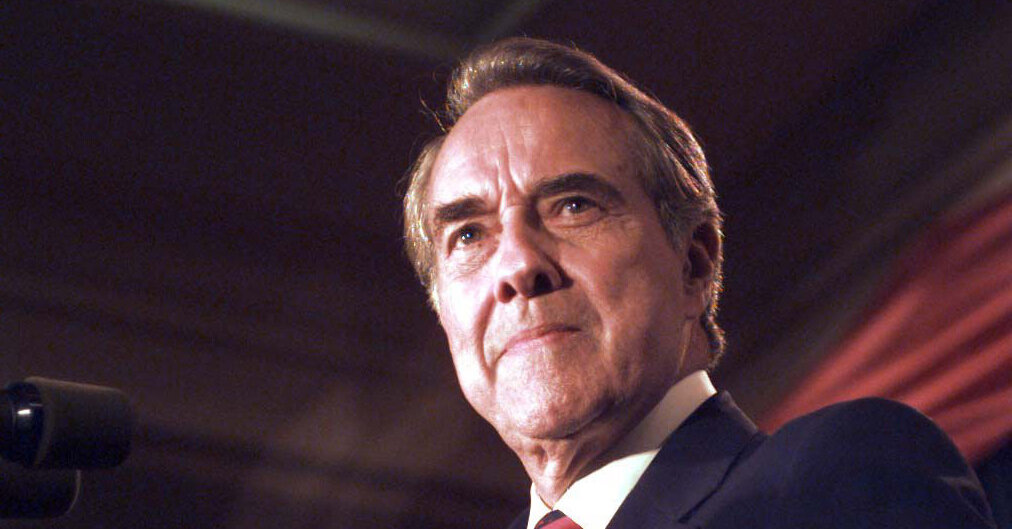
He spent more than three years recovering and underwent at least seven operations. Back in Russell, he devised a homemade weight-and-pulley system to rebuild his strength. The townspeople rallied around him, pooling their nickels and dimes for his treatment.
Russell was a speck on the flat Kansas prairie, but in the Dole biography it took on mythic significance. In his political campaigns, Russell was cast as the shaper of noble, small-town virtues and Mr. Dole as their personification.
Remembering that period, and the generosity of his neighbors, often brought him to tears. In his first appearance with President Ford in Russell in 1976, with 10,000 well-wishers crammed into the downtown business district, he thanked the townspeople for their support after the war. Then he started to cry and couldn’t go on. The audience fell silent. Finally, Mr. Ford stood and began clapping, and the audience joined in.
Regaining his composure, Mr. Dole said: “That was a long time ago.”
And yet even in 1996, long after Russell and his recovery had become a staple of his origin story, he could hardly mention that period without choking up. When his image-makers wrote references to it in his prepared remarks, he would often skip over those passages or truncate them to avoid the inevitable tears.
He could not avoid them on the final leg of his presidential campaign, however, by which time it was clear that he was going to lose. At a bowling alley in Des Moines, his friend Senator John McCain, a former naval aviator and Mr. Dole’s wingman in those last days on the road, delivered a spontaneous tribute to him.
“This is the last crusade of a great warrior,” Mr. McCain told a small crowd over the clatter of falling bowling pins, “a member of a generation of Americans who went out and made the world safe for democracy so that we could have lives that were far better for ourselves and for our children.”
Mr. Dole, standing nearby, wept.
After the war, during his recuperation, he met Phyllis Holden, an occupational therapist, and married her three months later, in 1948. He returned to college on the G.I. Bill. He already had credits from the University of Kansas, where he had studied pre-med. With Ms. Holden’s help, he earned a dual bachelor’s and law degree in 1952 at Washburn Municipal University (now Washburn University) in Topeka, Kan. They had a daughter, Robin, in 1954.




